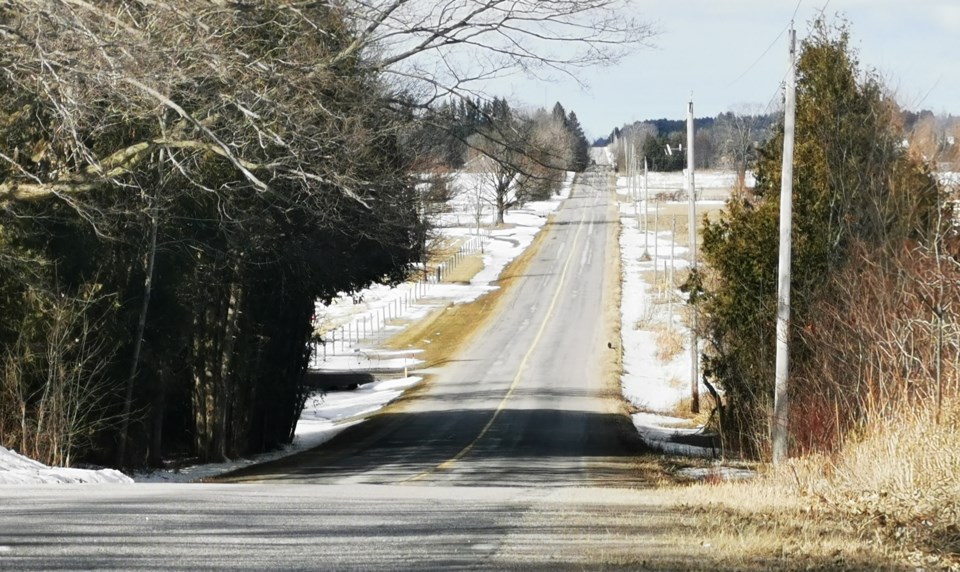It’s been another winter of discontent for Oro-Medonte Township resident Glen O’Brien.
Since 2020, he says he's been in constant contact with township staff, advising them that the road — and the traffic on it — in front of his home is dangerous and needs attention.
He’s concerned that the combination of speeding vehicles, a lack of posted speed-limit signs and a narrow, unmarked roadway over a culvert hidden by blind spots on the stretch of Line 9 North in Oro-Medonte, between the 15/16 Sideroad East and Old Barrie Road, may end in tragedy.
“Speeding is out of control in all weather and seasons,” O’Brien said in an email. “Traffic in both directions speed and there are no speed-limit signs.
“The report from the township said 55 per cent were over the 80-km/h speed limit — and 15 per cent were over 94 km/h," he added.
O’Brien is referring to a speed-limit review study that was conducted about two and a half years ago.
From Nov. 16-18, 2021, 72-hour traffic counts with speed data were collected at 17 identified locations throughout the township and assessed using the Transportation Association of Canada (TAC) Canadian Guidelines for Establishing Canadian Speed Limits and review of 85th percentile travel speeds.
The 85th percentile is the speed at or below which 85 per cent of the drivers will operate with open roads and favourable conditions.
According to that report, an average of 1,105 vehicles travel that section of roadway daily. Fifty-four per cent of those vehicles exceeded the 80-km/h speed limit. The 85th percentile speed was 94 km/h.
O’Brien said that was a clear indication that the speed limit should be lowered.
“It really is ridiculous and dangerous that the township keeps saying 80 km/h is safe through there,” he said.
Shawn Binns, Oro-Medonte's director of operations and community services, said O’Brien’s interpretation of the data is incorrect. He said the 85th percentile is used as an additional consideration in speed-limit reviews, not the sole indicator.
“In short, speed limits are reviewed using the TAC Guidelines for the Establishment of Canadian Speed Limits,” Binns said. “ln this case, using the 85th percentile (without TAC) would suggest a 90-km/h speed limit to be more appropriate. However, the TAC assessment outlines an 80-km/h limit. As the 85th percentile is over 10 km/h it is identified for targeted speed enforcement – it is not used to determine a reduction in speed limit – this is done through TAC.”
Binns said a third-party engineer conducts the review for due diligence.
He also said there is no signs required for default speed limits.
“The Ontario Highway Traffic Act prescribes standard speed limits of 50 km/h for built up/residential areas and 80 km/h for all other areas," said Binns, such as rural and concession roads. “Municipalities have authority to reduce the speed from the default as prescribed within the Act.
“Signage is required and placed in accordance with the Act where the township has reduced the speed limit from the defaults,” he added.
Binns also said the Ontario Traffic Manual outlines requirements/guidelines for signs.
He said the township has reviewed O’Brien’s concerns and has found the existing signs to be appropriate.
While not required, Binns said the township would install narrow structure signs in the appropriate locations in the future.
